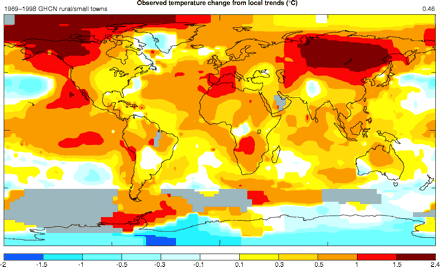
(from D. Rind Complexity and Climate, in Science 2 April 1999 284:106)

We can think about the Earth in ways that were unthinkable a century ago. We are awash in information, afloat on a rising tide of data, and we need water wings, surfboards and swimming lessons. Most disciplines rely upon various electronic media --computers of course, and sensory extensions of their central processing units, but also audio and video devices, optical fiber, telemetry, remote sensing. We must learn to navigate many of these rapidly-evolving technologies, and we must cope with the enhanced perspective they force upon us. Events in distant places affect us more rapidly, and problems are often global and cross-disciplinary in scope. The best way to prepare students for involvement in such complexities is to integrate their study and analysis into undergraduate courses. There is serious work here for most disciplines, broadening their purview to take account of larger (regional, intercontinental, global) levels of organization.
Here's a link to some of our library holdings, selected post-1995 books on 'global change' and 'global models'
Some "global models" and "global perspectives" links from AltaVista searches:
Measurements and global models of surface wave propagation from Harvard Seismology PublicationGlobal Models Bibliography and intro page (Peter Brecke, International Affairs, Georgia Tech)
The Accelerated Climate Prediction Initiative: Bringing the Promise of Simulation to the Challenge of Climate Change
THE WORLD IN A MACHINE: ORIGINS AND IMPACTS OF EARLY COMPUTERIZED GLOBAL SYSTEMS MODELS (Paul N. Edwards)
Global Comprehensive Models in Politics and Policymaking Published in Climatic Change 32 (1996), pp. 149-161. (Paul N. Edwards)
II. SCIENCE AND FACILITIES -- THE VISION (from National Center for Atmospheric Research)
Changes in Biogeochemical Cycles
The Terrestrial Ecosystem Model (TEM) and Beyond
Oak Ridge National Laboratory Distributed Active Archive Center, Global NPP Datasets bibliography
Global and Environmental Chemistry at University of Washington
Modeling Ocean Circulation (Albert J. Semtner)
What is a global model? (Global Vision)
Publications Catalog - Global Modeling from International Institute for Applied Systems Analysis
GeoSphere Image (the image was first published as the title page of the 1990 National Geographic World Atlas)